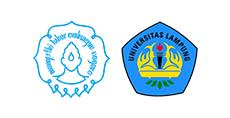Comparison of Application of Jigsaw IV and Reverse Jigsaw Methods based on Students’ Participation and Achievement
Abstract
The purpose of this research is to study the effects of Jigsaw IV and Reverse Jigsaw cooperative learning model from participation and achievement (cognitive abilities). The method used in this research was the experiment 2x2 factorial design. The population was students (X Class) of SMK N 3 Surakarta. This research used a cluster random sampling technique. The techniques of collecting data of this research were the interview, observation, questionnaire, and testing. The techniques of data analysis were used as a two-way analysis of variance. Based on this research, it could be concluded as follows: (1) there is a different influence between application of Jigsaw IV and Reverse Jigsaw cooperative learning model based on students' cognitive ability (Sig. = 0,045 < 0,05), (2) there is a different influence between the high and low category of students' participation toward cognitive ability (Sig. = 0,000 < 0,05), (3) there is an interaction between the influence of cooperative learning type Jigsaw IV and Reverse Jigsaw application and students' participation toward students' cognitive ability (Sig. = 0,027 < 0,05). The result of this research could be put into consideration for the teacher to application Jigsaw IV and Reverse Jigsaw cooperative learning model in the learning activity.
Full Text:
PDFReferences
Asmani, J. M. (2016).Tips efektif cooperative learning.Yogyakarta: DIVA Press.
Dimyati., & Mudjiono. (2013). Belajar & Pembelajaran. Jakarta: Rineka Cipta.
Hedeen, T. (2006). The Reverse Jigsaw: A Process of Cooperative Learning and Discussion. Teaching Sociology, 31(3), 325. https://doi.org/10.2307/3211330
Hidayat, S. (2018). Tingkat pengangguran sesuai lulusannya paling banyak lulusan SMK. Diperoleh 05 Februari 2019 pukul 10.40, dari https://nasional.kontan.co.id/news/tingkat-pengangguran-sesuai-pendidikannya-paling-banyak-lulusan-smk
Özdemir, E., & Arslan, A. (2016). The Effect of Self-regulated Jigsaw IV on University Students’ Academic Achievements and Attitudes towards English Course. Journal of Education and Training Studies, 4(5), 173–182. https://doi.org/10.11114/jets.v4i5.1453.
Rosyidah, U. (2016). Jurnal SAP Vol . 1 No . 2 Desember 2016 ISSN : 2527-967X PENGARUH MODEL PEMBELAJARAN KOOPERATIF TIPE JIGSAW TERHADAP HASIL BELAJAR MATEMATIKA SISWA KELAS VIII SMP NEGERI 6 METRO Jurnal SAP Vol . 1 No . 2 Desember 2016 ISSN : 2527-967X. Jurnal SAP, 1(2), 115–124.
Samuel, I. R. (2018). Effects of Jigsaw IV , Group Investigation and Reversed Jigsaw Cooperative Instructional Strategies on Basic Science Stud ents’ Achievement and Retention. International Journal of Innovative Education Research, 6(2), 54–62.
Slavin, R.E. (2005). Cooperative Learning Teori Riset dan Praktik. Bandung: Nusa Media.
Suratno. (2005). Strategi Kooperatif Gabungan Jigsaw Iv-Reciprocal Teaching Dalam Meningkatkan Hasil Belajar.
Timayi, J. M., Bolaji, C., & Kajuru, Y. K. (2015). Effects of Jigsaw IV Cooperative Learning Strategy (J4CLS) on Academic Performance of Secondary School Students in Geometry. International Journal of Mathematics Trends and Technology, 28(December), 12–18.
Yamin, M (2007). Kiat Membelajarkan Siswa. Jakarta: Gaung Persada Press.
Refbacks
- There are currently no refbacks.






